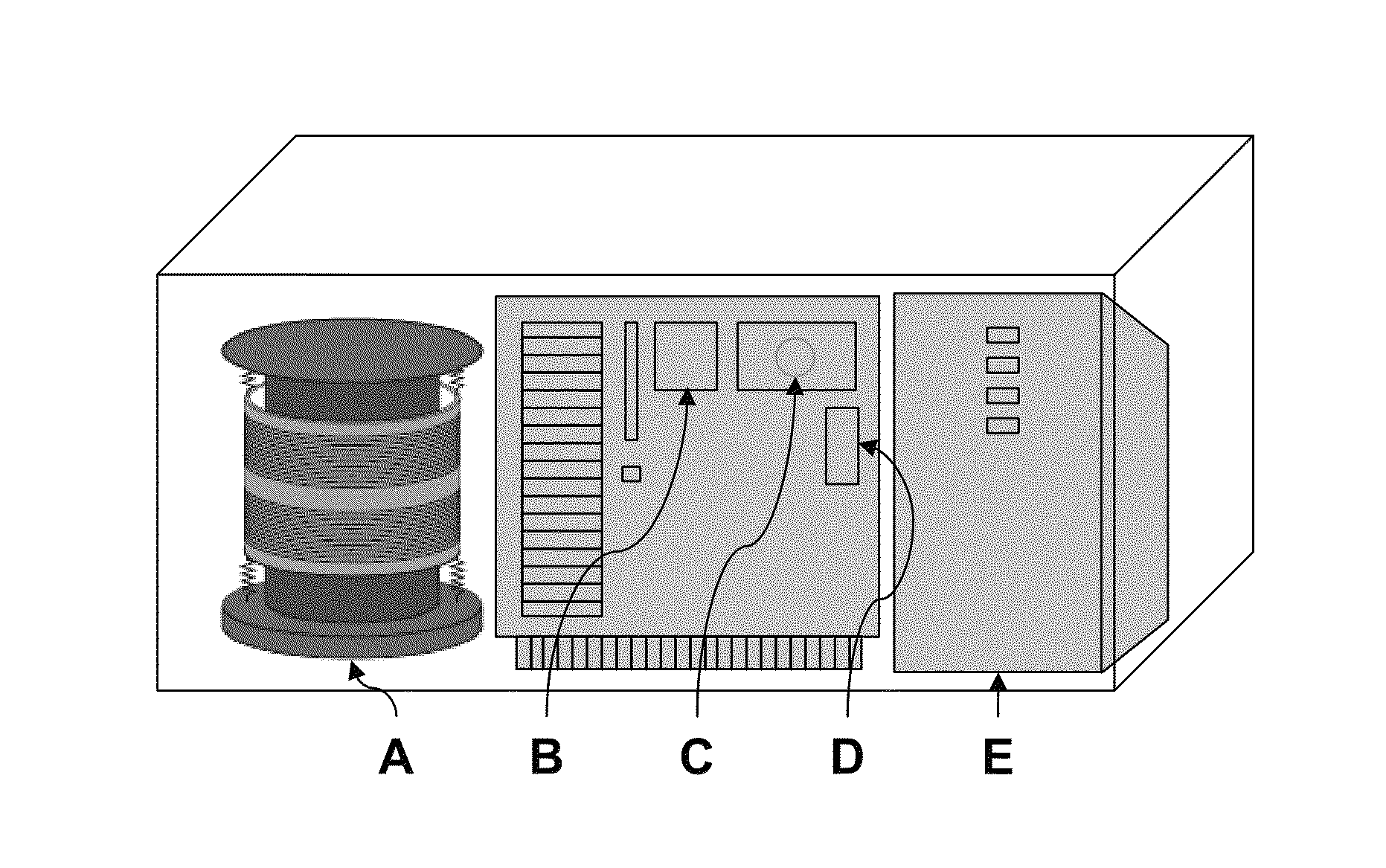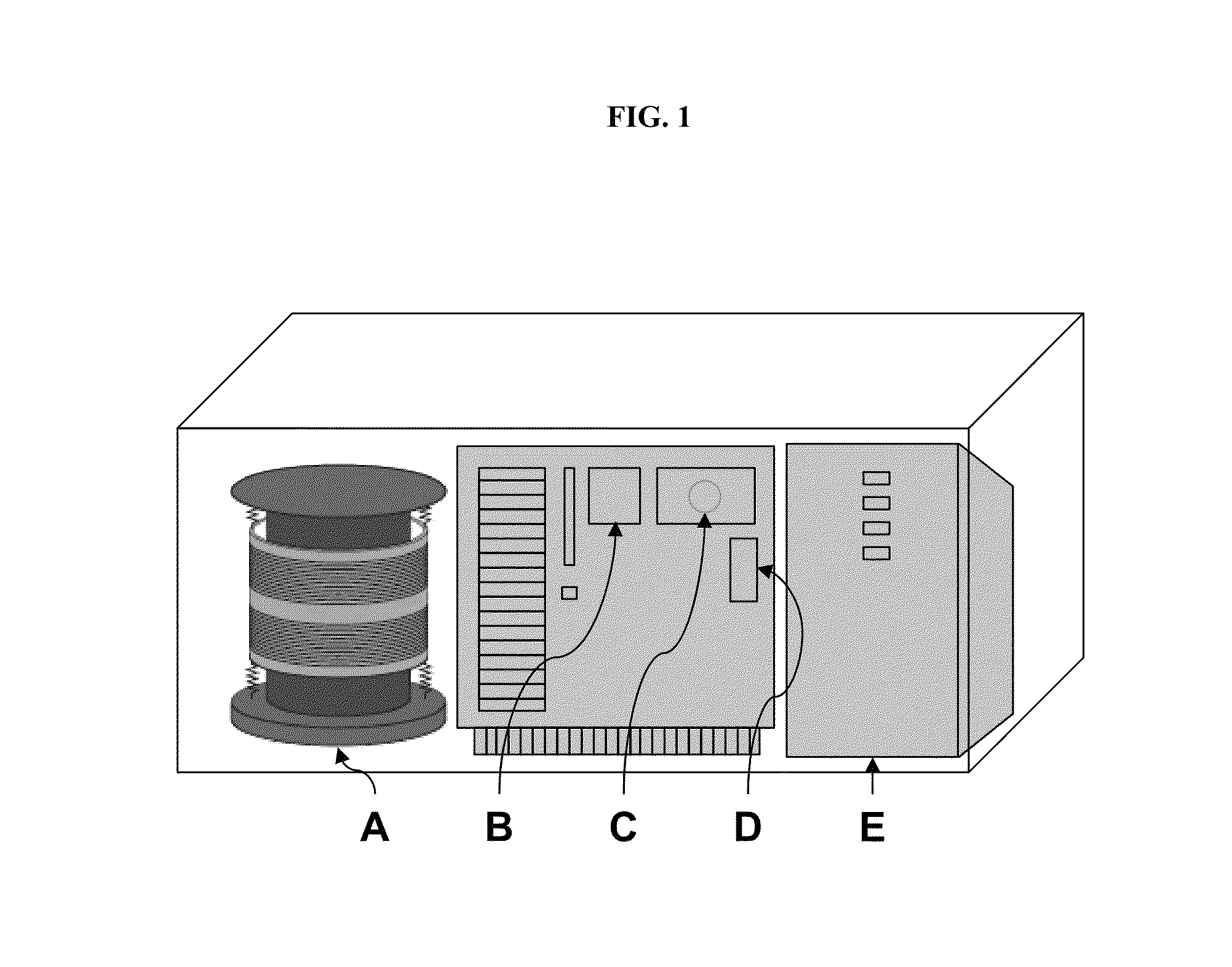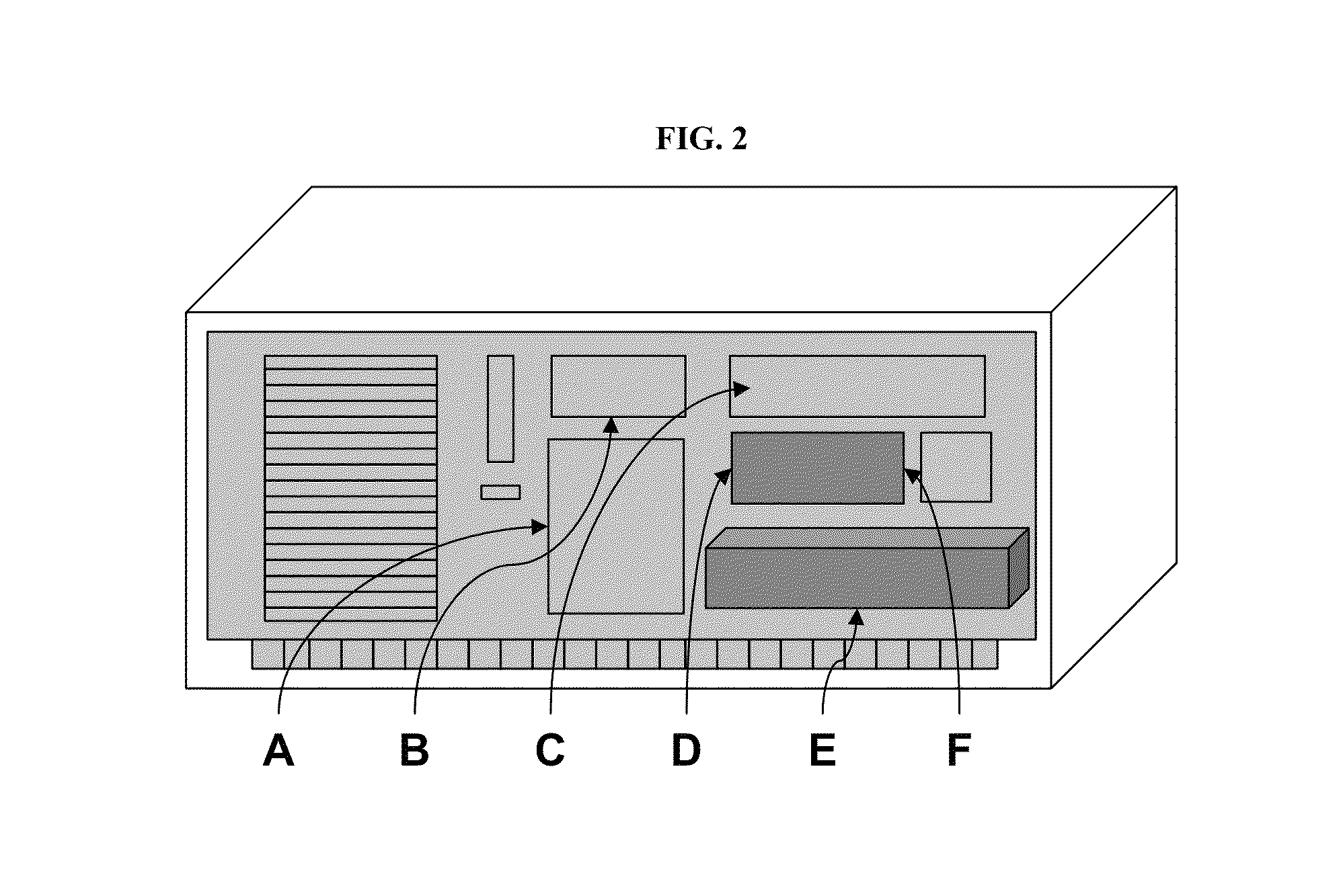Practical autonomous seismic recorder implementation and use
a technology of autonomous recording and recording device, which is applied in the field of methods and apparatus for generating seismic signals, can solve the problems of not using or providing a conventional digital timer or clock that achieves accuracy, and none currently using multiple gps systems, so as to achieve sufficient accuracy, reduce the size of the autonomous recording device, and reduce the cost
- Summary
- Abstract
- Description
- Claims
- Application Information
AI Technical Summary
Benefits of technology
Problems solved by technology
Method used
Image
Examples
example 1
Simple Autonomous Recorder
[0059]As shown in FIG. 1, an autonomous recorder is provided that contains a seismic receiver (A), a field timer (B), a processor (C), a data transmitter (D), and a battery (E). The autonomous recorder as diagrammed in FIG. 4 simply transmits a seismic signal and field time record directly to a separate, remote recorder where the seismic data and time are recorded along with data from other recorders. The field timer may be a separate timer or a computer counter incorporated into the processor.
example 2
GPS Synchronized Autonomous Recorder
[0060]As shown in FIG. 2, an autonomous recorder is provided that contains a seismic receiver (A), a field timer (B), a processor (C), a data transmitter (D), a battery (E) and a GPS unit (F). The autonomous recorder as diagrammed in FIG. 4 transmits a seismic signal and field time record directly to a separate, remote recorder where the seismic data and time are recorded along with data from other recorders. The GPS signal is transmitted upon request, at defined times to the central recorder.
example 3
Buffered Autonomous Recorder
[0061]As shown in FIG. 3, an autonomous recorder is provided that contains a seismic receiver (A), a field timer (B), a processor (C), a data transmitter (D), a battery (E) and a GPS unit (F). The autonomous recorder may contain a geophone, accelerometer, directional 3-way accelerometer, one or more solar panels, a GPS processor with built in computer based timer, a memory buffer and transmitter. The autonomous recorder as shown in FIG. 3 stores seismic, timer, and GPS data in a buffer memory. The data is transmitted during and after a seismic survey when the central recorder requests the stored data or at specific time intervals. This system may have multiple redundant components to monitor timing drift, provide a “sleep battery,” multiple processors, multiple transmitters, and other systems required for operation of individual components or the system as a whole.
[0062]In one embodiment the autonomous recorder has a central processor, a GPS, multidirecti...
PUM
 Login to View More
Login to View More Abstract
Description
Claims
Application Information
 Login to View More
Login to View More - R&D
- Intellectual Property
- Life Sciences
- Materials
- Tech Scout
- Unparalleled Data Quality
- Higher Quality Content
- 60% Fewer Hallucinations
Browse by: Latest US Patents, China's latest patents, Technical Efficacy Thesaurus, Application Domain, Technology Topic, Popular Technical Reports.
© 2025 PatSnap. All rights reserved.Legal|Privacy policy|Modern Slavery Act Transparency Statement|Sitemap|About US| Contact US: help@patsnap.com



